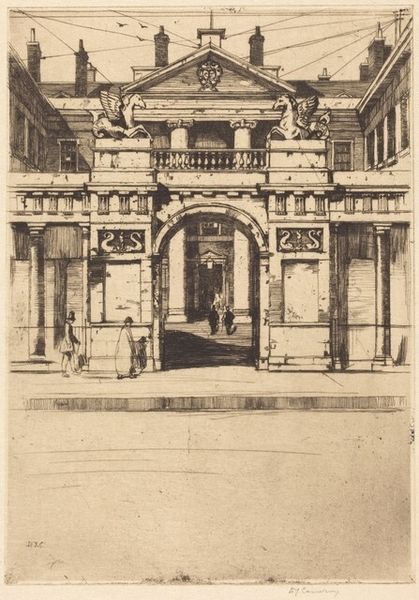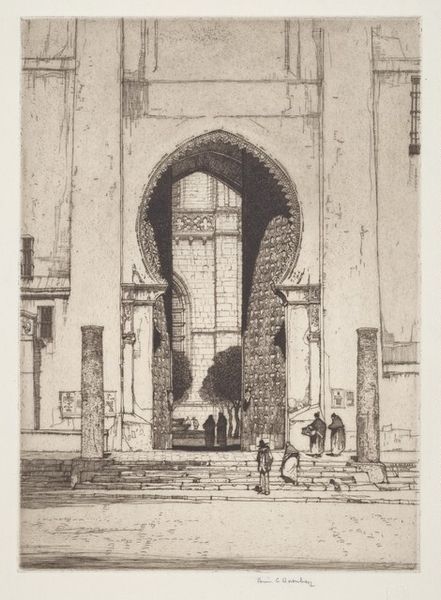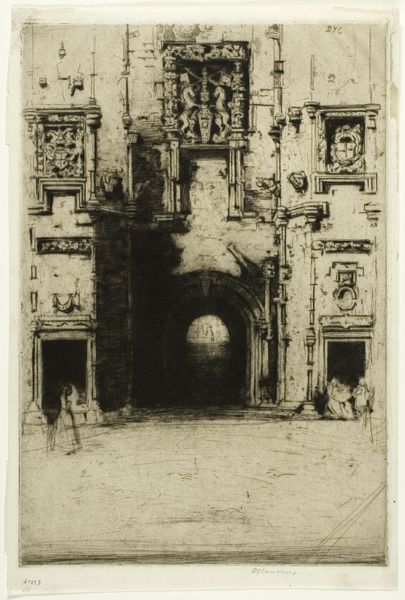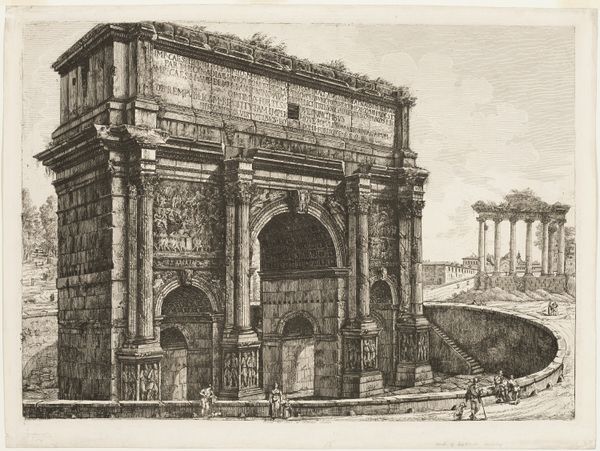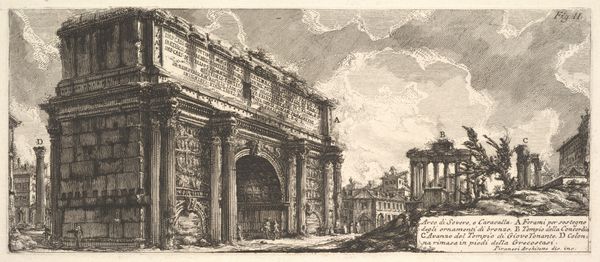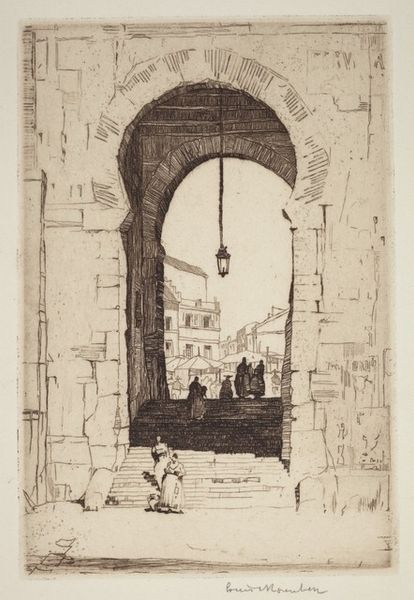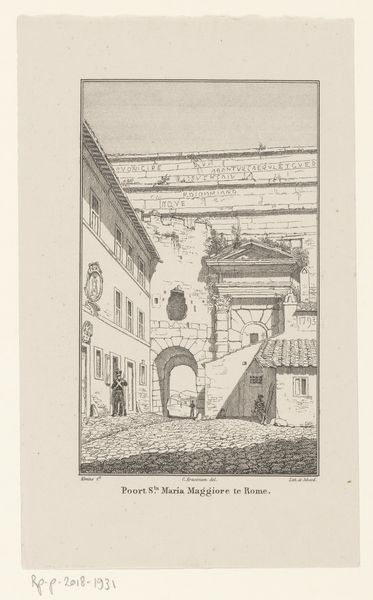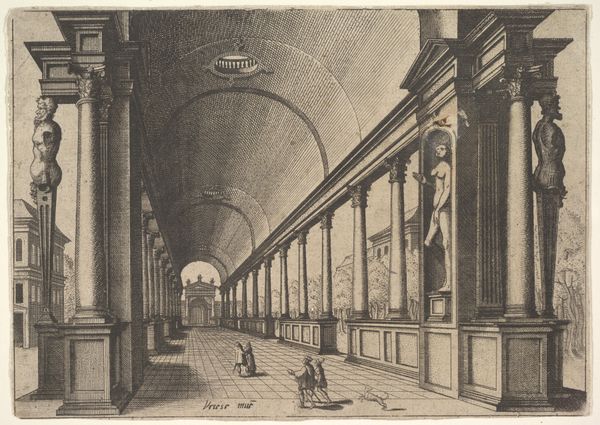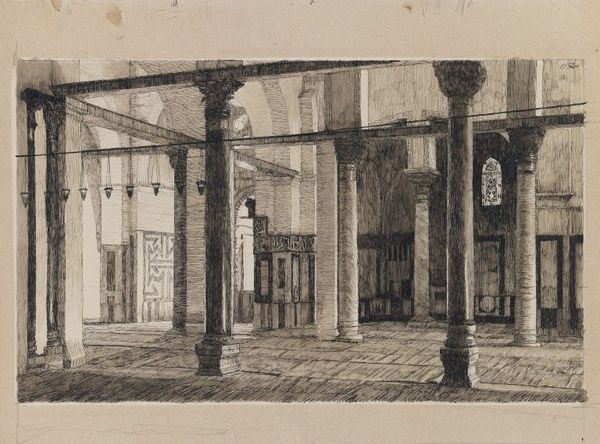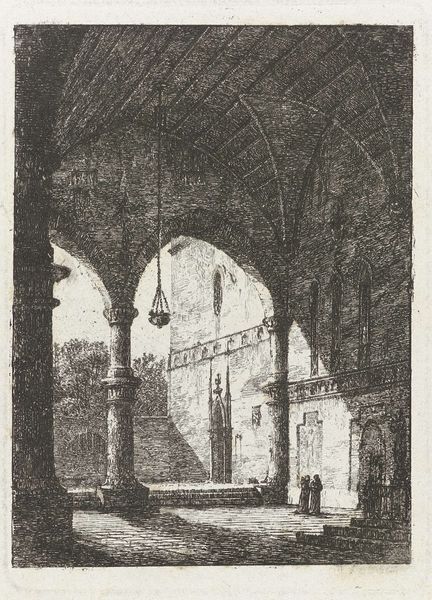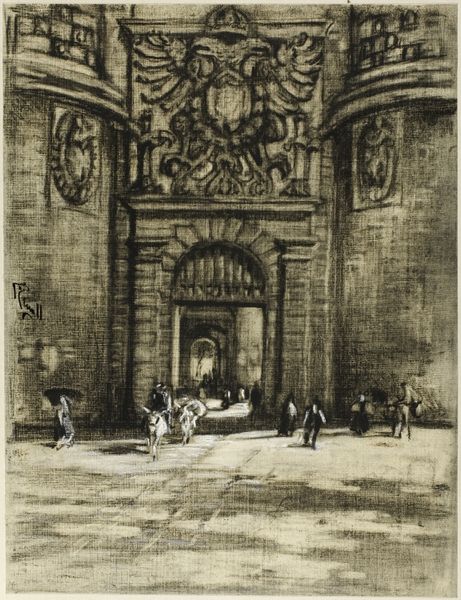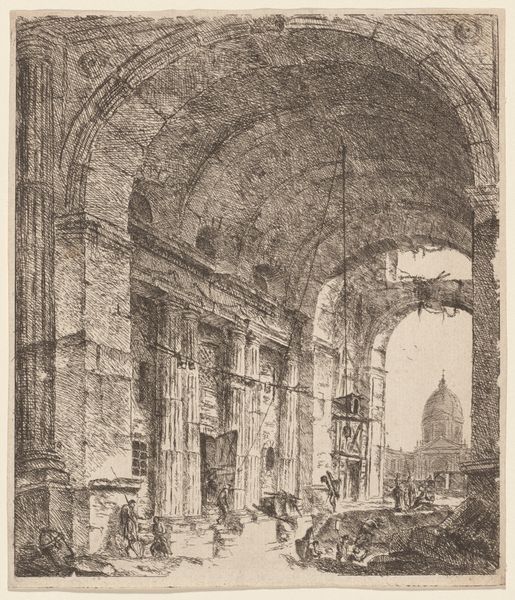
drawing, print, etching, engraving
#
drawing
# print
#
pen sketch
#
etching
#
cityscape
#
engraving
#
realism
Dimensions: plate: 37.1 × 37.2 cm (14 5/8 × 14 5/8 in.)
Copyright: National Gallery of Art: CC0 1.0
Curator: Standing before us is "Lothbury Court, Bank of England", a 1929 etching by Henry Rushbury. The cityscape rendered with astonishing detail. Editor: Immediately, it gives me the feeling of being backstage at a theatre right before a performance; maybe one of those really grand Shakespeare plays. A play full of important men discussing…money. Curator: Indeed, the architectural lines dominate the composition. Observe how Rushbury meticulously delineates the classical features: the imposing columns, the arched windows, the sculpted figures atop the facade, all contributing to an atmosphere of monumentality. The interplay of light and shadow adds further depth and complexity. Editor: The shadows are intense, right? They’re like an army. They make me think of that looming sense of…well, you know, the market. Fortunes are made, fortunes are lost in places like that, places of solemn facades. I can practically feel the city holding its breath! Curator: A rather astute observation. Notice the distribution of figures throughout the courtyard. These individuals, though small in scale, animate the scene. Each person occupies a specific plane that is precisely positioned. Semiotically, this may evoke the societal hierarchy within a capitalist structure. Editor: Right, everyone playing their roles… But honestly? All those stone steps and columns... feels like it's almost… guarding something. Making it deliberately difficult for ordinary people to engage? Money! That's power; Rushbury is documenting power itself. Curator: Such inferences could indeed resonate through a postmodern interpretation of the work. Still, a rigorous formalist reading appreciates Rushbury's technical brilliance and mastery. Look closely at the details, which invite you to contemplate perspective, mass, and line. The precision is quite impeccable! Editor: Impeccable but still imbued with such feeling, don't you think? It proves art, whatever the period, whispers much more than it shouts. Curator: A valid reflection upon Rushbury’s subtle intent. It underscores how, even in apparently objective renderings, the subjective nuances reveal something essential about ourselves. Editor: Absolutely. It reminds us to keep watching the play. Because, unlike the stage, real life doesn’t always tell us the ending.
Comments
No comments
Be the first to comment and join the conversation on the ultimate creative platform.

